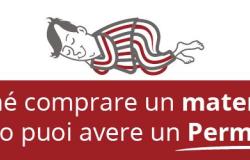
Precision in measuring ingredients is fundamental in the kitchen, indispensable in pastry making, where chemistry plays a crucial role in the final result. The main difference between the use of grams — the metric system that we Europeans use — and the use of American cups (cup) and spoons (tablespoontable spoon, and teaspoon, teaspoon), part of the imperial system. And no, it’s not just a question of units of measurement because, in the end, it reflects two decidedly different cooking philosophies. Here they are.
Grams: absolute precision
The metric system, which uses grams as a unit of measurement for solid ingredients and milliliters for liquids, is known for his punctuality. Each ingredient has a specific density that affects its weight. For example, a gram of salt does not take up the same volume as a gram of powdered sugar. Using a digital scale allows you to measure ingredients with a precision that can reach up to the milligram, almost completely eliminating the margin of error.
From cups to American spoons: approximation and convenience
US cups as well as tablespoons or teaspoons, on the other hand, are a volume-based measurement method. This system is deeply rooted in American culinary tradition and offersan indisputable convenience: It’s faster to measure an ingredient to the indicated mark inside a cup than to weigh it. Or fill a teaspoon or tablespoon with a given food. However, this mode has significant margins of variability. The same quantity of flour, for example, can weigh differently depending on how compact or airy it is. Which inevitably leads to discrepancies that can influence the success of a recipe.
Grams vs cup: which system is more convenient?
Without a doubt that of grams. Culinary science, particularly in pastry making, requires precision: An excess or deficiency of a key ingredient can turn a potential masterpiece into a disaster Certain. Gram precision eliminates much of the “approximation factor.”
Adaptation and Application
Despite the superiority of the precision of the grams, it is correct to recognize the value of the practicality and tradition represented by American cups. Many family and traditional U.S. recipes are passed down using measurements in cups, tablespoons, and teaspoons. There are many home cooks who prefer the simplicity of this method. Professionals, however, should feel comfortable with both measurement methods, choosing the most suitable one depending on the recipe and culinary context. In any case, the adaptation between the two systems is not always immediate. It can, in fact, present complexity due to differences in density between the ingredients. Which is why there are conversion tables and online tools that can facilitate this process. Here are some
Tags: Grams cups spoons measurement system kitchen Differences conversions





